Students at our school are able to use the wildlife area during their free time, and from April to October the grounds are at their most busy. Our work to increase biodiversity has always gone hand in hand with increasing accessibility to our students so that they can experience all the benefits of being out in nature.
Over the past few weeks, we have been preparing for the spring and summer ahead. Paths have been weeded and wood chip replaced; temporary paths are mown through the meadow areas. New seating areas created, and rotten log seats removed and replaced.
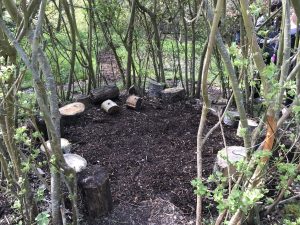
Seating area in the willow dome
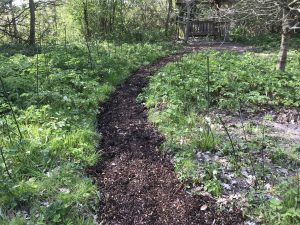
Wood chip path
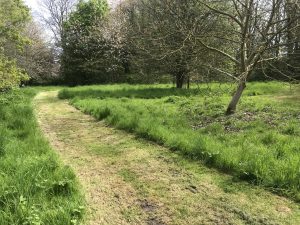
Mown path through the meadow
Over winter the nettle patch has been used as a compost heap, but now the nettles have returned. Nettles need soil with high nitrogen content so will grow vigorously on compost. Nettles are the food plant of the caterpillars of small tortoiseshell, comma, peacock and red admiral butterflies. However, butterflies are picky, they will only lay their eggs on nettles in a sunny spot so we restrict ours to a large sunny patch in our butterfly garden. Ladybird larvae also eat nettles and our patch is teaming with native seven spot ladybirds in late April.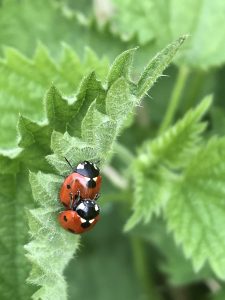
Once the risk of frost is over it’s time to plant out the lavender cuttings from September. The willows are checked for bad weather damage and rogue branches moved out of the way of paths. Nettles and brambles are removed from the violet bank.
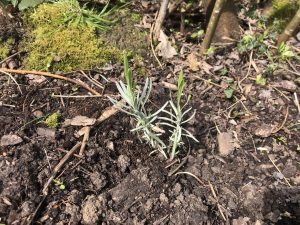
Lavender cutting from September 2022
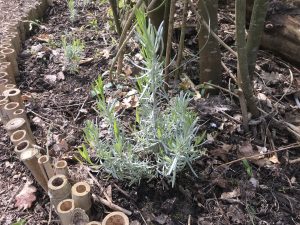
Lavender cutting from September 2021
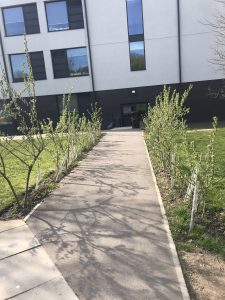
Willows planted in November 2021
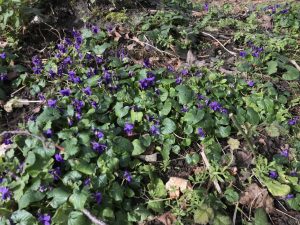
Violet bank in full bloom

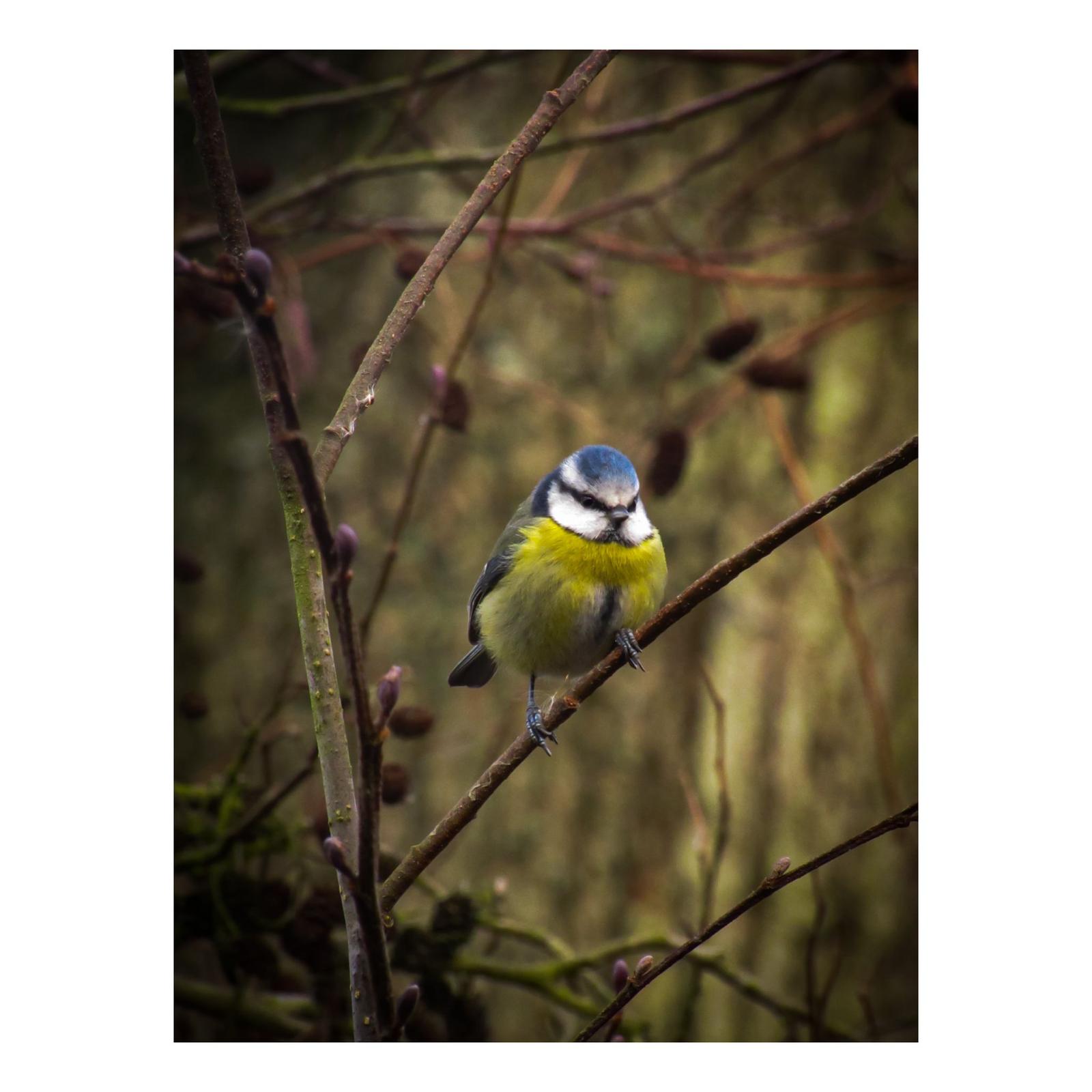

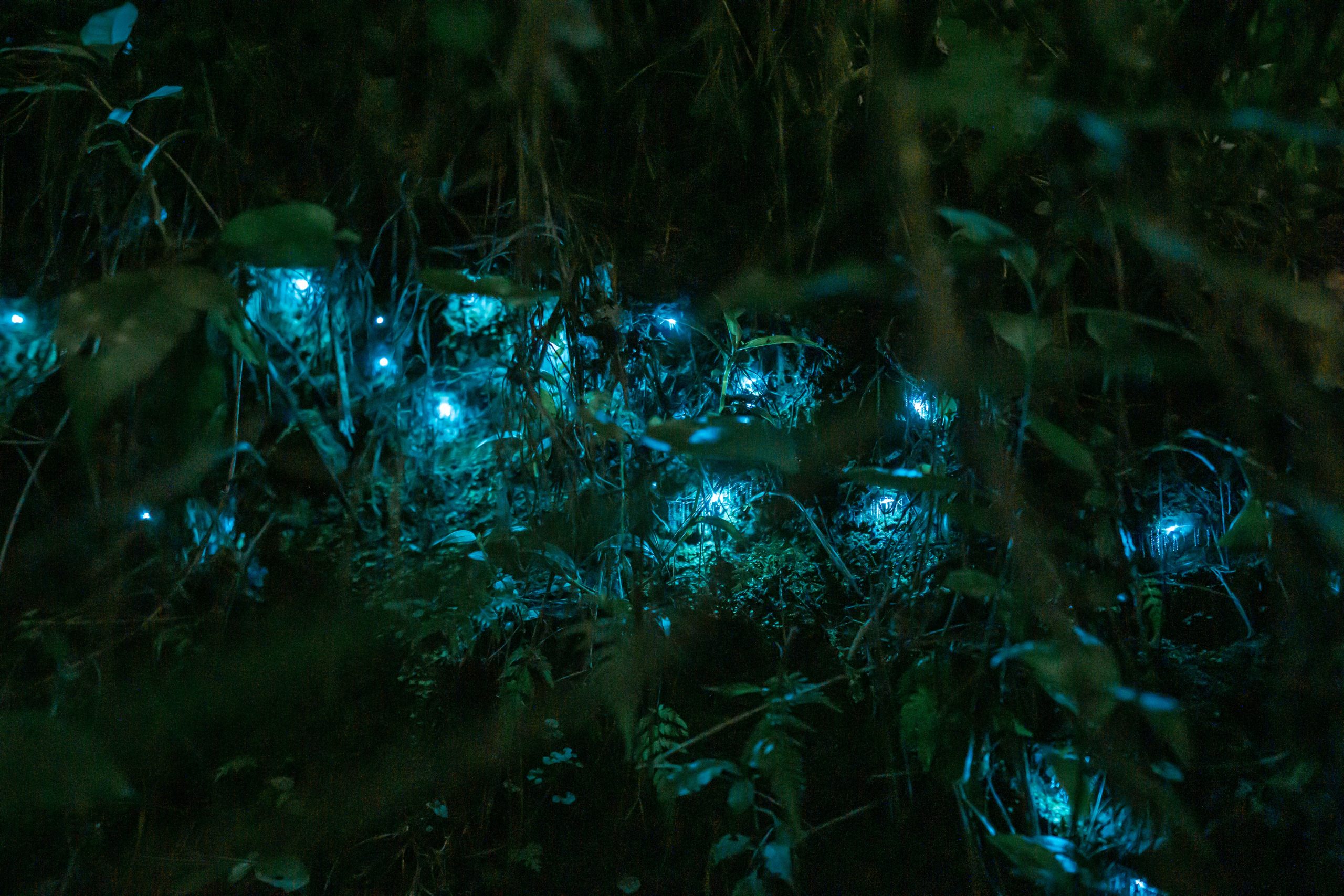
0 Comments